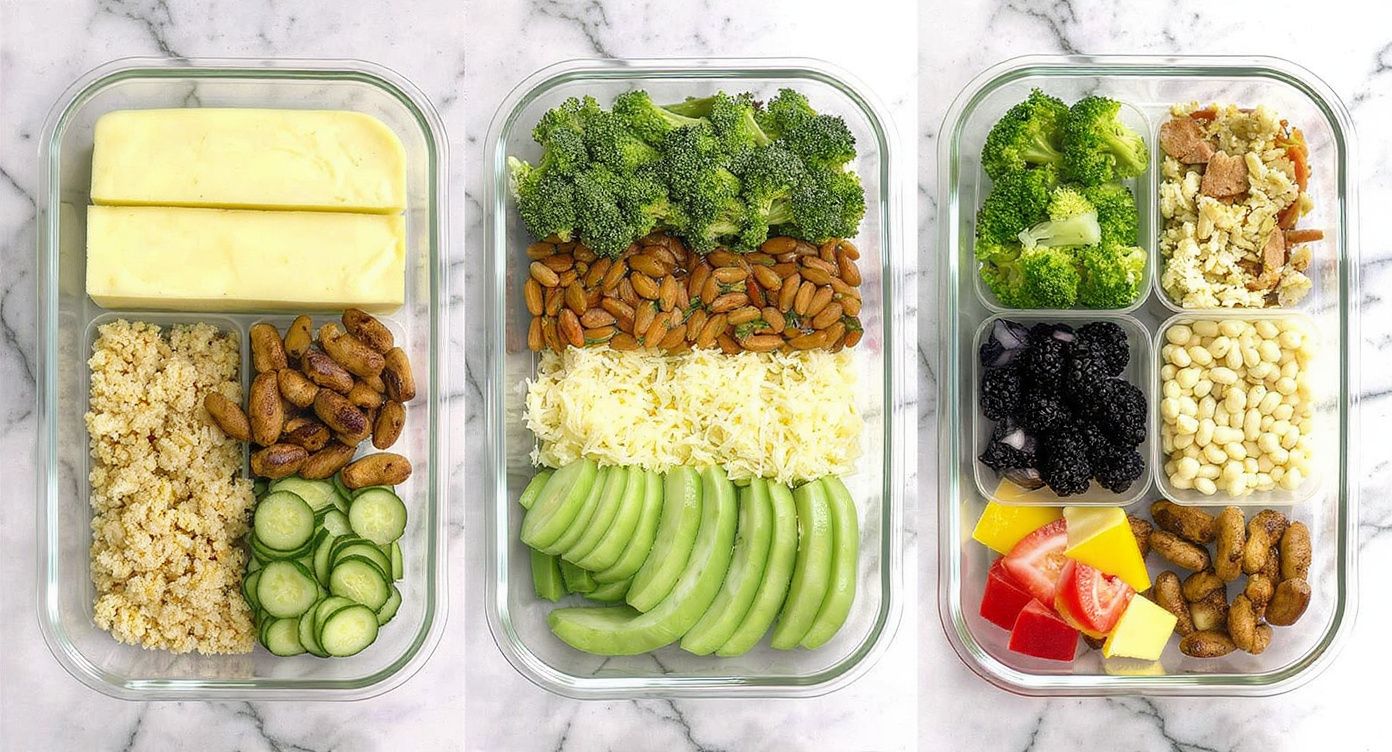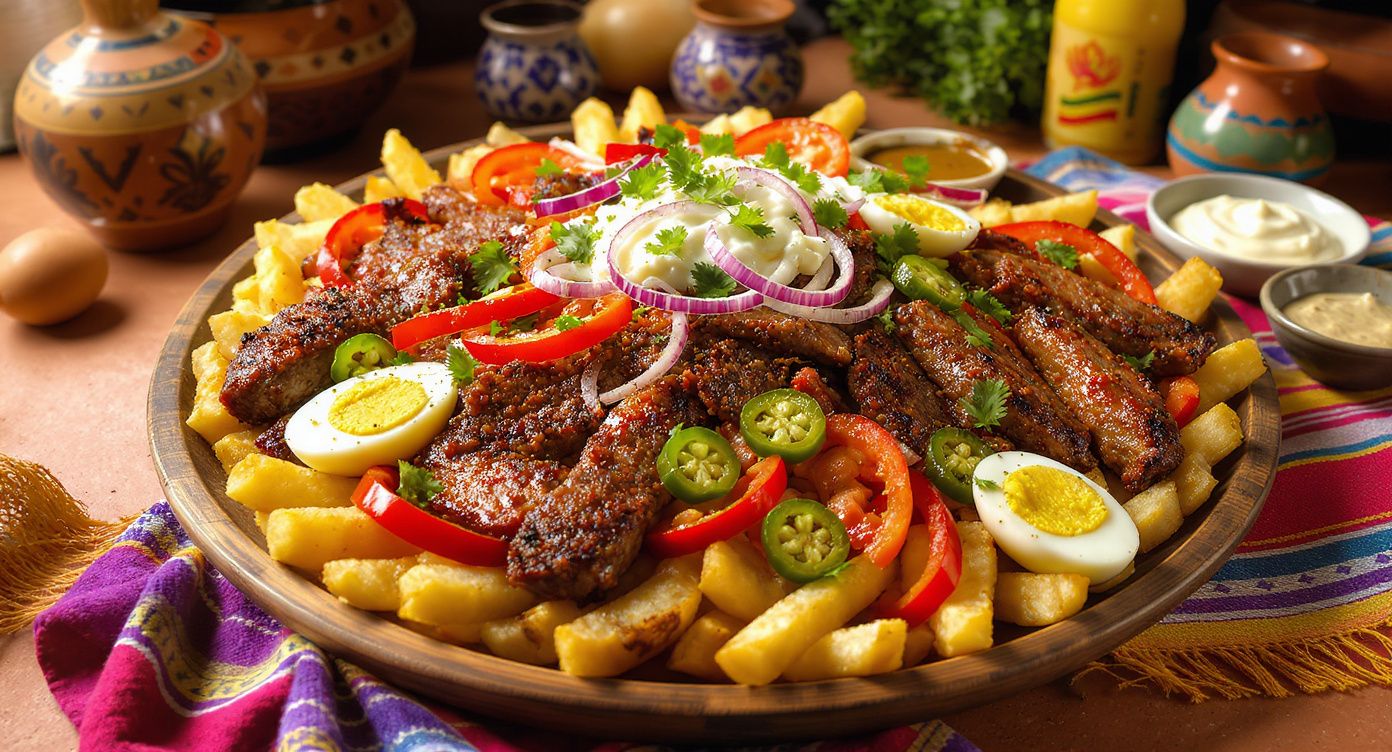- Vitazen Health
- Posts
- 🧂 The Spice That Reverses Aging After 70
🧂 The Spice That Reverses Aging After 70

Hello Everyone - Welcome to Vitazen Health!
In Today’s Edition:
Health Breakthrough: The Spice That Reverses Aging After 70
Quick Wins: 3 Simple Meal Planning Hacks for a Healthier Week
Research + Resources: Diet and Longevity
Recipe of the Week: Bolivian Pique Macho


HEALTH BREAKTHROUGH
The Spice That Reverses Aging After 70
Ever feel like the conversation around aging is all about slowing down and accepting decline? We're constantly told to expect memory lapses, joint pain, and a lack of energy as an inevitable part of getting older.
But what if I told you there's a simple spice, already sitting in your pantry, that's backed by science to not just slow, but potentially reverse some of these age-related changes? This isn't about some fancy new supplement; it's about a fundamental shift in how we think about nutrition.
Today, we're going to challenge three common misconceptions about aging and introduce a surprising solution.
Mistake #1: Believing age-related decline is inevitable and irreversible.
Mistake #2: Focusing on expensive supplements instead of whole foods.
Mistake #3: Thinking nutrition can't have a profound impact on serious health conditions.
The reason so many of us get this wrong is we've been conditioned to think that getting older means accepting a new reality of limits. But what if we could reclaim our vitality and empower ourselves with knowledge that's been hiding in plain sight? Let's dive in.
The Big Idea: Food as Medicine
The big idea here is simple but powerful: your kitchen is a pharmacy, and food is your most potent medicine. We often overlook the incredible power of common, everyday ingredients to influence our health at a cellular level. The goal is to move beyond just eating for sustenance and start eating to actively promote longevity and reverse the effects of aging.
3 Common Mistakes We Make About Aging and Nutrition
Thinking Decline is a One-Way Street: We often accept the narrative that once you hit 70, it's all downhill. This mindset leads to passive acceptance rather than proactive health management. The root cause is a lack of information about how our bodies can repair and regenerate, even in later years. The consequence? We miss out on opportunities to improve our health and quality of life simply because we don't believe it's possible.
Chasing "Magic Pill" Supplements: We're bombarded with ads for expensive supplements promising to turn back the clock. This distracts us from the foundation of good health: whole foods. The root cause is the marketing machine that sells quick fixes instead of promoting sustainable lifestyle changes. The consequence is spending a lot of money on products with questionable efficacy while neglecting the proven power of a nutrient-rich diet.
Underestimating the Power of Spices: Many people view spices as just flavor enhancers, not as potent health tools. The root cause is a lack of education on the medicinal properties of common spices, which have been used for centuries in traditional medicine. The consequence? We fail to incorporate these powerful, natural compounds into our daily diet, missing out on their profound anti-inflammatory and antioxidant benefits.
Three-Step Solution to Reverse Aging with a Common Spice
Step 1: Understand the Role of Inflammation
The first step to reversing aging is to understand its silent partner: chronic inflammation. Inflammation is the root cause of many age-related diseases, from arthritis to heart disease and even cancer.
The myth is that "inflammation" is just a buzzword. The reality is that it's a measurable biological process that can be controlled through diet. The corrective action is to actively incorporate powerful anti-inflammatory agents into your meals.
The concrete example here is turmeric. This yellow spice contains a compound called curcumin, which has been shown in studies to be a powerful anti-inflammatory. According to a review published in Frontiers, curcumin can help reduce markers of inflammation in the body.
Takeaway: Don't just treat the symptoms of aging; address the root cause of chronic inflammation.
Step 2: Embrace the Power of Antioxidants
The second step is to fight back against cellular damage caused by free radicals, a process known as oxidative stress. This is a major contributor to aging, damaging our cells and DNA over time.
The mistake here is thinking that you need exotic "superfoods" to get enough antioxidants. While those are great, the truth is many everyday spices are packed with them. The corrective action is to make a habit of including these antioxidant-rich spices in your cooking.
For example, cinnamon, another common spice, is loaded with powerful antioxidants. A study noted that cinnamon can help protect the body from oxidative damage. Sprinkling half a teaspoon of cinnamon on your oatmeal or in your coffee is a simple, delicious way to start your day with an antioxidant boost.
Takeaway: You don't need expensive superfoods; your pantry is already full of antioxidant powerhouses.
Step 3: Make it a Daily Habit
The final step is the most important: consistency. The benefits of these spices aren't a one-time fix; they come from making them a regular part of your diet.
The myth is that you need a complicated meal plan to see results. The corrective action is to find simple, enjoyable ways to incorporate these spices into your existing routine. This is a big deal because consistency is what turns a good intention into a real, lasting health benefit.
A concrete example is to create a "golden milk" latte with turmeric, a dash of black pepper (to increase absorption), and a bit of cinnamon. This delicious drink is easy to make and provides a daily dose of powerful anti-aging compounds. This could mean a future where you feel more energetic and vibrant, not just for a few days, but for years to come.
Takeaway: Small, consistent actions lead to big, long-term health transformations.
What's Next?
We've just scratched the surface of how a simple spice can be a powerful tool for healthy aging. By focusing on anti-inflammatory and antioxidant properties, you can take control of your health and challenge the conventional wisdom about getting older.


QUICK WINS
3 Simple Meal Planning Hacks for a Healthier Week
As we get older, our nutritional needs change, but our busy schedules often don't. We know that consistent, healthy eating is key to maintaining energy, managing weight, and preventing illness, but who has time for elaborate meal prep? These three simple, evidence-based hacks are designed to fit your life, not overhaul it. You can start them this week to save time and feel better.
1. The "Cook Once, Eat Twice" Rule
Reduce cooking time and food waste by intentionally making larger portions. This ensures you have a healthy, pre-made meal ready to go, which helps prevent reaching for less healthy convenience foods when you're tired. This is particularly useful for managing blood sugar and energy levels throughout the week.
How to implement: When cooking a dinner like a roast chicken, a batch of chili, or a big salad, double the recipe. Store the extra portion in a single-serving container in the refrigerator for lunch the next day, or freeze it for a future busy evening.
Results timeline: You’ll see immediate time savings with one less meal to prepare each week.
Safety note: Ensure all leftovers are stored in an airtight container and refrigerated within two hours to prevent foodborne illness.
Progress tracking: On a calendar, mark each day you successfully use a leftover meal. See how many you can get in a week!
2. The "Power Snack" Prep
Keep your energy levels steady and avoid blood sugar crashes by preparing a healthy, protein-rich snack in advance. This hack is specifically designed to combat the afternoon slump and reduce cravings for sugary treats, which can be a concern for managing conditions like type 2 diabetes.
How to implement: At the beginning of the week, hard-boil a dozen eggs, chop up a batch of raw vegetables like carrots and bell peppers, or portion out nuts and cheese into small bags. Place these ready-to-go snacks in a visible spot in your fridge or pantry.
Results timeline: Noticeable improvement in energy and fewer afternoon cravings often occur within 3-4 days.
Safety note: Choose snacks that are easy to chew and digest. If you have nut allergies or concerns, opt for other options like seeds, yogurt, or roasted chickpeas.
Progress tracking: Note your energy levels on a scale of 1-5 each afternoon before and after implementing this tip for one week.
3. The "Freezer Blueprint" Method
Build a "blueprint" of simple, healthy meals in your freezer for those days when you're not feeling up to cooking. This strategy provides peace of mind and ensures you always have a nutritious option on hand, which is crucial for maintaining consistent nutrition and a healthy weight.
How to implement: Dedicate a Sunday afternoon to making and freezing one or two large batches of your favorite meals. Think soups, stews, or pre-portioned smoothie ingredients. Label each item with the date and contents. When you need a quick meal, you just have to reheat it.
Results timeline: This is a long-term strategy for convenience, but you'll feel the benefits the very first time you pull a healthy, homemade meal from the freezer instead of ordering takeout.
Safety note: Be mindful of sodium content in recipes and use less salt where possible. If you have mobility issues, consider pre-chopped vegetables to reduce time spent on prep.
Progress tracking: Keep a running list of your freezer meals. Enjoy the satisfaction of marking each one off as you use it.
Remember: Consistency, not perfection, is the goal. Start with one of these hacks this week and build on your success.
Always consult your healthcare provider or a registered dietitian before making significant changes to your diet, especially if you are managing a chronic health condition.


RESEARCH ROUNDUP + RESOURCES
🥣 Diet and Longevity
One study published in Plos Medicine highlights the significant impact of diet on a person's lifespan, potentially extending it by decades. The study found that transitioning from a typical Western diet to an "optimal" one, rich in legumes, whole grains, nuts, fish, fruits, and vegetables, could lead to nearly a decade of longer life. The most notable health improvements were observed in people who increased their intake of legumes, whole grains, and nuts while reducing red and processed meats. Even a "feasible" diet, which is a moderate improvement over a Western diet, showed noteworthy changes to health and anticipated longevity.
🚴♀️ Physical Activity and Healthy Aging
A review article in the Canadian Medical Association Journal (CMAJ) emphasizes the crucial role of physical activity in preventing or reducing the effects of diseases in older adults. A 2023 meta-analysis cited in the article found that 150 minutes of moderate physical activity every week reduced the risk of death from all causes by 31%. The study also highlights that higher levels of physical activity in older age are associated with improvements in cognition, mental health, and quality of life. The World Health Organization (WHO) recommends 150-300 minutes of moderate-to-intense physical activity weekly, which should include resistance training as an essential component.
👵 Key Nutritional Needs for Older Adults
An article from the American Heart Association outlines the changing nutritional needs of every person depending on age. As muscle mass declines with age, the need for protein becomes increasingly important. It cites that the recommended daily protein intake for older adults is about 5 ½ ounces per day. The article also stresses the importance of key nutrients, including vitamin D, calcium, vitamin B12, and fiber.

RECIPE OF THE WEEK
Bolivian Pique Macho (4 Servings)
This classic Bolivian platter is a hearty, protein-rich dish that combines tender strips of beef, sliced sausage, and fried potatoes with a medley of fresh vegetables. It provides a satisfying balance of macronutrients, while the tomatoes, onions, and peppers contribute antioxidants and essential vitamins.
Estimated calories: 415 per serving.

Ingredients
For the Pique Macho:
1 ½ lbs boneless, lean beef steak, thinly sliced
½ lb beef hot dogs or spicy sausage, sliced diagonally
2 medium yellow onions, sliced into half-moons
2 tomatoes, sliced into half-moons
1 red bell pepper, sliced
1 jalapeño or hot chili pepper (to taste), finely sliced
3 Russet potatoes, cut into thick fries
4 hard-boiled eggs, halved or quartered
2 tablespoons olive oil
Salt and black pepper to taste
1 teaspoon ground cumin
1 teaspoon paprika
1 teaspoon dried oregano
¼ cup beer (optional, for tenderizing the meat)
For Serving:
Mustard
Mayonnaise
Llajua (Bolivian hot sauce)
Fresh cilantro, chopped
Recipe Steps
Prepare the Ingredients: Cut the beef into bite-sized chunks. In a bowl, marinate the beef with salt, pepper, cumin, paprika, and oregano. Set aside for at least 30 minutes. Slice all vegetables and set aside.
Cook the Potatoes: Preheat a deep fryer or a large pot with oil to 350°F (175°C). Fry the potatoes until golden brown and crispy. Remove with a slotted spoon and season with salt. Alternatively, you can bake the potatoes in the oven.
Cook the Meats: In a separate large skillet, heat 1 tablespoon of olive oil over medium-high heat. Brown the sliced hot dogs or sausage for a few minutes and set them aside.
Cook the Beef: Add the remaining olive oil to the same skillet. Add the marinated beef and cook until all sides are browned. If using beer, add it to the pan and cook until the liquid has reduced and evaporated, which helps tenderize the meat.
Combine the Dish: Return the cooked hot dogs/sausage to the skillet with the beef and mix thoroughly to combine the flavors.
Assemble and Serve: On a large serving platter, arrange the crispy fries as a base. Layer the meat and sausage mixture on top, including some of the juices from the pan. Garnish with the fresh vegetables, hard-boiled eggs, and fresh cilantro.
Serving Suggestions
Serve this pique macho immediately with mustard, mayonnaise, and llajua on the side for a full, authentic experience. This is an ideal meal to get some much needed protein while still having harnessing other nutrients and getting an enjoyable meal.

PS - Want to stop feeding inflammation and start healing your body with every sip?
In The Anti-Inflammation & Immunity Smoothie & Juice Recipe Book, not only do we give you 65+ science-backed smoothie and juice recipes designed to reduce inflammation and bulletproof your immune system, but we also include The Ultimate Anti-Inflammatory Ingredient Guide (so you never guess which foods fight disease), complete recipe categories for gut-healing, immune-boosting, and anti-aging formulas, AND the exact Green Detox Powerhouse blends that flush toxins and rebuild your liver.
You'll never wonder what to drink to heal your body again.

Reply